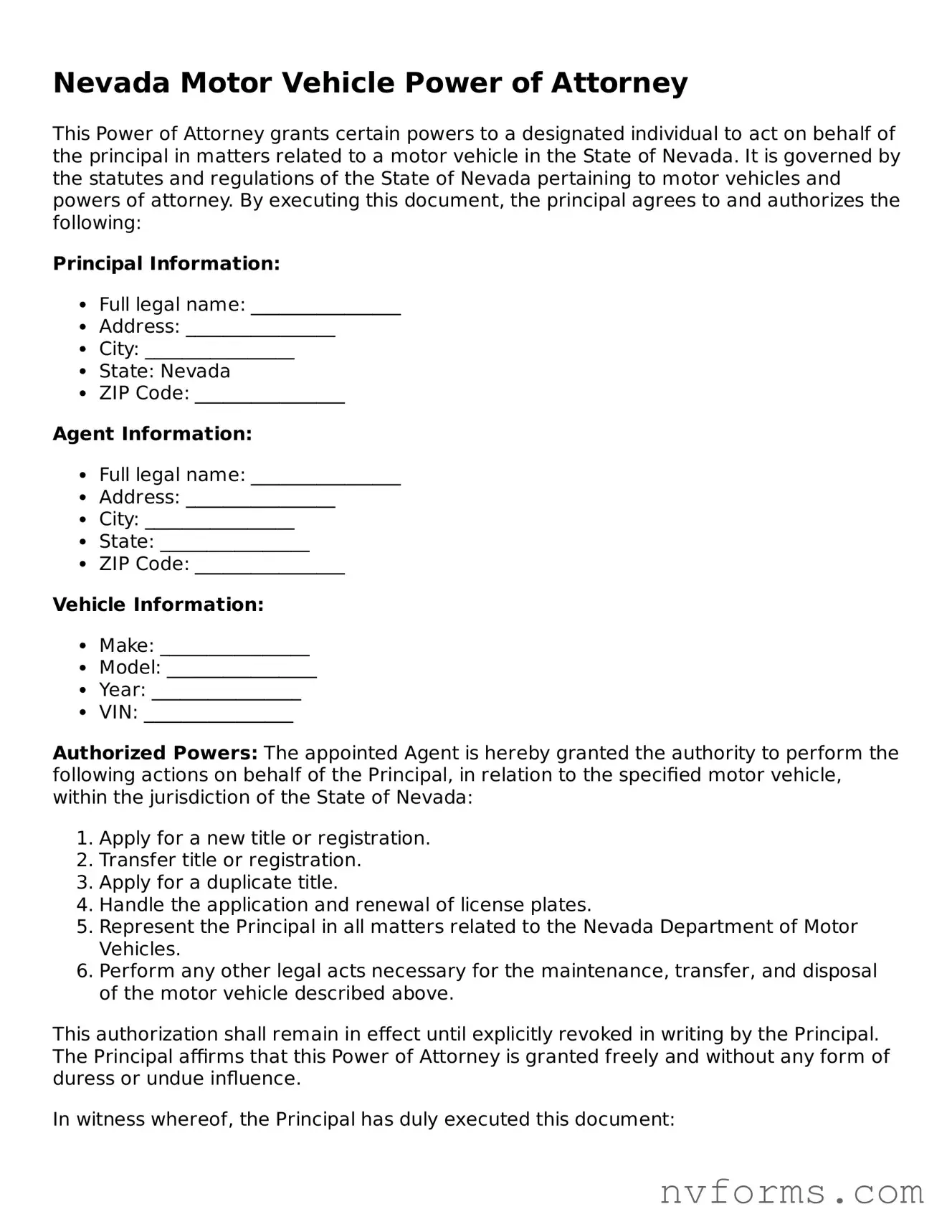When handling the Nevada Motor Vehicle Power of Attorney form, a document that allows someone else to act on your behalf in matters related to your vehicle, it's crucial to avoid common errors. These mistakes can lead to delays, confusion, or even the invalidation of the document. By understanding what these errors are, individuals can ensure a smoother process and secure the intended legal outcomes.
Firstly, not providing complete information is a fundamental mistake. The form requires detailed information about the vehicle, the owner, and the agent. Leaving blanks or providing incomplete details can result in the document being rejected or questioned by the Department of Motor Vehicles (DMV).
Another frequent error is incorrect vehicle identification. Each vehicle has a unique identification number (VIN), and any mistake in this number can lead to serious complications, including document rejection or legal issues related to vehicle identity.
Failing to specify the powers granted clearly is also a common oversight. The Nevada Motor Vehicle Power of Attorney form allows for the delegation of various tasks, such as registration, titling, and selling. Without clear instructions, the agent might not be able to carry out the desired actions on behalf of the vehicle owner.
Additionally, issues often arise from not signing in the presence of a notary public. Nevada requires this document to be notarized to verify the identity of the signatory and ensure the signature's authenticity. Skipping this step can render the form invalid.
- Providing incomplete or inaccurate information.
- Mistakes in the vehicle identification number (VIN).
- Not specifying the scope of powers granted to the agent.
- Omitting the notarization process.
Moreover, using the wrong form can be a critical error. Nevada has specific requirements and formats for legal documents, including the Power of Attorney for motor vehicles. An outdated or inappropriate form will not be accepted.
Forgetting to update the form when circumstances change is a regular oversight. If there's a change in the agent's status, the vehicle's ownership, or other significant details, the existing document may no longer be valid or applicable.
- Utilizing an outdated or incorrect form.
- Neglecting to update the form as needed.
These mistakes are not exhaustive but represent some of the most common pitfalls encountered when completing the Nevada Motor Vehicle Power of Attorney form. Attention to detail, careful reading of instructions, and ensuring all required steps are followed can mitigate these issues, allowing for a valid and effective document to be produced.
Ultimately, taking the time to accurately complete the Nevada Motor Vehicle Power of Attorney form is crucial. This diligence not only facilitates smooth transactions involving your vehicle but also ensures that your legal rights and intentions are clearly communicated and protected. If there's any doubt or confusion, seeking guidance from a professional can provide clarity and peace of mind throughout the process.
